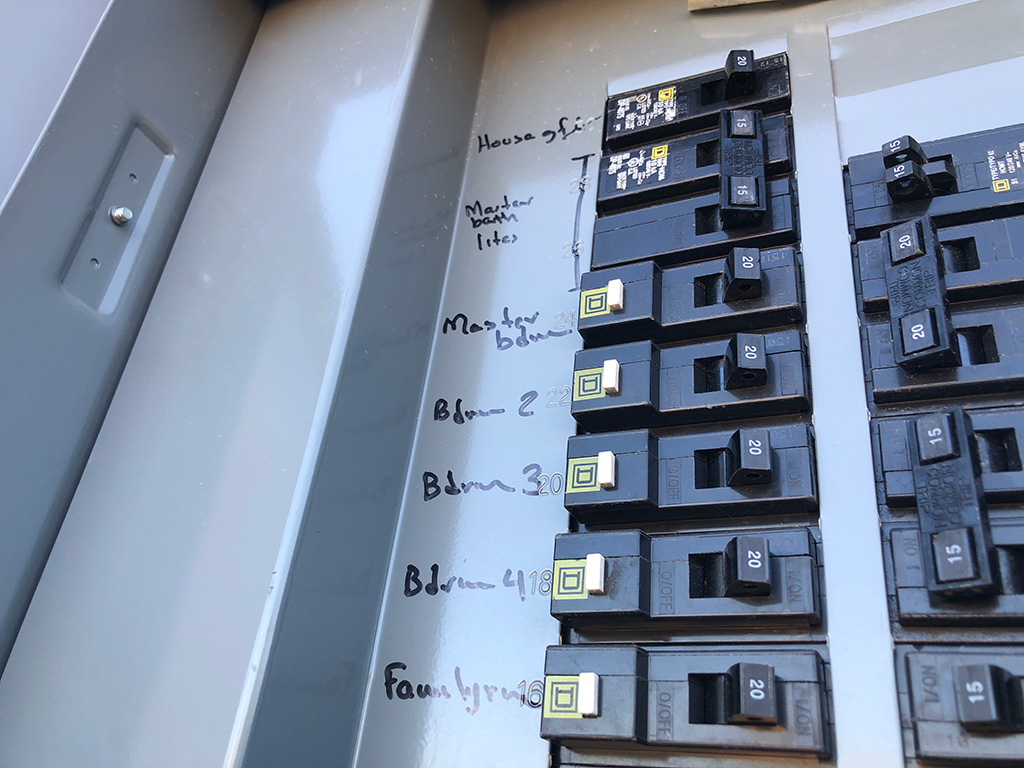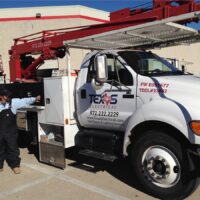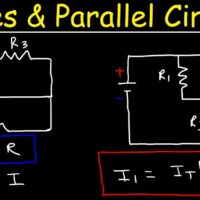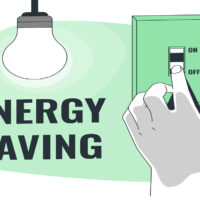A circuit breaker is an automatic electrical switch designed to protect electrical circuits from damage. It interrupts current flow after detecting a fault.
Circuit breakers play a crucial role in electrical safety. They prevent electrical overloads and short circuits, safeguarding homes and businesses. Unlike fuses, circuit breakers can be reset after tripping, making them more convenient and cost-effective. They come in various types, including standard, ground fault circuit interrupters (GFCIs), and arc fault circuit interrupters (AFCIs).
Each type serves specific functions and enhances overall electrical safety. By ensuring reliable performance, circuit breakers help maintain the integrity of electrical systems. Their importance in modern electrical infrastructure cannot be overstated, as they protect both people and property from electrical hazards.
Introduction To Circuit Breakers
Circuit breakers are essential components in electrical systems. They protect our homes and devices from electrical faults. Understanding their role helps keep us safe.
What Is A Circuit Breaker?
A circuit breaker is a safety device. It stops electrical flow in an emergency. Think of it like a switch that trips when too much current flows. This prevents overheating and fires.
Circuit breakers come in different types. Some are small for home use. Others are large for industrial applications. Their main job is the same: stop dangerous electrical surges.
Importance In Electrical Systems
Circuit breakers are crucial for electrical safety. They protect circuits from damage. Without them, electrical faults could cause fires. These devices quickly cut off power when a problem occurs.
Here are some key benefits:
- Prevents Fires: Stops electrical overloads that could ignite.
- Protects Devices: Keeps appliances from damage during surges.
- Ensures Safety: Reduces the risk of electrical shocks.
The importance of circuit breakers in homes and industries cannot be overstated. They are the guardians of our electrical systems.
Types Of Circuit Breakers
Circuit breakers are essential for electrical safety. They protect circuits from damage caused by overloads or short circuits. There are different types of circuit breakers, each designed for specific applications. This section explores the main types of circuit breakers.
Miniature Circuit Breakers (mcb)
Miniature Circuit Breakers (MCB) are commonly used in residential and commercial buildings. They protect electrical circuits from overloads and short circuits. MCBs are small and easy to install.
- Rated for low current circuits
- Quick response to electrical faults
- Available in single or multiple pole configurations
MCBs are ideal for home use. They ensure safety and prevent electrical fires.
Molded Case Circuit Breakers (mccb)
Molded Case Circuit Breakers (MCCB) are used in industrial applications. They handle higher currents compared to MCBs. MCCBs provide thermal and magnetic protection.
| Features | Description |
|---|---|
| Current Rating | Up to 2500 Amperes |
| Adjustable Settings | Customizable trip settings |
| High Interrupting Capacity | Handles large fault currents |
MCCBs are vital in factories and large buildings. They protect against severe electrical faults.
Ground Fault Circuit Interrupters (gfci)
Ground Fault Circuit Interrupters (GFCI) are crucial for personal safety. They detect ground faults and shut off the electrical circuit. GFCIs are often used in wet areas.
- Bathrooms
- Kitchens
- Outdoor outlets
GFCIs protect against electric shocks. They are life-saving devices. Install GFCIs in areas where water and electricity are present.
How Circuit Breakers Work
Circuit breakers are crucial safety devices in electrical systems. They prevent electrical overloads and short circuits. Understanding how they work can help you appreciate their importance.
Basic Operating Principle
Circuit breakers protect electrical circuits from damage caused by excess current. They automatically stop the flow of electricity in an overloaded circuit. This helps to prevent overheating and potential fires.
When the current flow exceeds a safe limit, the breaker trips. This action disconnects the electrical supply. To restore the circuit, you need to reset the breaker.
Key Components
Circuit breakers have several key components. Each part plays a vital role in their function.
- Frame: Provides structural support and insulation.
- Operating Mechanism: Opens and closes the breaker contacts.
- Contacts: Allow current flow when closed.
- Arc Extinguisher: Extinguishes the electrical arc when the contacts open.
- Trip Unit: Senses and responds to electrical faults.
Below is a table summarizing these components and their functions.
| Component | Function |
|---|---|
| Frame | Provides structural support and insulation. |
| Operating Mechanism | Opens and closes the breaker contacts. |
| Contacts | Allow current flow when closed. |
| Arc Extinguisher | Extinguishes the electrical arc when the contacts open. |
| Trip Unit | Senses and responds to electrical faults. |
Understanding these components helps you see how circuit breakers protect your home. These devices are essential for electrical safety.

Credit: www.rockwellautomation.com
Installation And Maintenance
Installing and maintaining a circuit breaker is crucial for electrical safety. Proper installation ensures effective operation, while routine maintenance extends its lifespan. This guide provides clear steps and tips to keep your circuit breaker in top shape.
Proper Installation Steps
Follow these steps for a secure and efficient circuit breaker installation:
- Turn off the main power switch to ensure safety.
- Remove the panel cover to access the breaker box.
- Identify the slot for the new breaker.
- Insert the circuit breaker into the slot firmly.
- Connect the neutral and ground wires to the bus bars.
- Attach the hot wire to the breaker terminal.
- Secure the breaker in place and replace the panel cover.
- Turn the main power switch back on to test the breaker.
Routine Maintenance Tips
Routine maintenance ensures your circuit breaker works efficiently. Here are some essential tips:
- Inspect for Damage: Check for any visible damage or wear.
- Test Regularly: Test the breaker by switching it on and off.
- Clean the Breaker: Use a dry cloth to clean the breaker surfaces.
- Tighten Connections: Ensure all wire connections are tight.
- Replace Worn Parts: Replace any parts that show signs of wear.
By following these steps and tips, your circuit breaker will stay in excellent condition. Regular checks and maintenance can prevent electrical issues, ensuring safety and reliability.
Common Issues And Troubleshooting
Understanding common issues with circuit breakers is important. It helps in maintaining electrical safety at home. Troubleshooting these problems can prevent bigger issues. Here, we’ll discuss frequent tripping and how to reset a circuit breaker.
Frequent Tripping
Frequent tripping is a common issue with circuit breakers. It usually happens due to overloads, short circuits, or ground faults.
| Cause | Description |
|---|---|
| Overload | Too many appliances on one circuit cause an overload. |
| Short Circuit | Wires touch, causing a short circuit and breaker trips. |
| Ground Fault | Hot wire touches ground wire, causing a fault. |
Resetting A Circuit Breaker
Resetting a circuit breaker is straightforward. First, turn off all devices connected to the breaker.
- Locate the breaker panel.
- Identify the tripped breaker. It will be in the middle position.
- Switch the breaker to the “off” position.
- Wait a few seconds.
- Switch the breaker to the “on” position.
If the breaker trips again, there might be a serious issue. In this case, consult a professional electrician.
Important: Always ensure your hands are dry before touching the breaker panel.
By following these steps, you can troubleshoot common circuit breaker issues. Regular maintenance and awareness can ensure electrical safety.

Credit: en.wikipedia.org
Safety Tips
Ensuring safety around your circuit breaker is crucial. Follow these safety tips to protect your home from electrical hazards.
Preventing Electrical Fires
Electrical fires can be deadly. Here are some tips to prevent them:
- Inspect your circuit breaker regularly.
- Avoid overloading your circuits.
- Replace worn or damaged wiring immediately.
- Install smoke detectors near your circuit breaker.
Regular inspection helps catch problems early. Overloading circuits can cause overheating. Damaged wiring is a fire risk. Smoke detectors offer early warnings.
Safe Handling Practices
Handling circuit breakers safely is important. Follow these practices:
- Turn off the main power before working.
- Use insulated tools for safety.
- Wear rubber gloves to prevent shocks.
- Keep water away from the breaker panel.
Turning off the main power reduces risk. Insulated tools prevent electrical contact. Rubber gloves protect from shocks. Water can cause electrical hazards.
| Safety Tip | Description |
|---|---|
| Inspect Regularly | Check for signs of wear or damage. |
| Avoid Overloading | Do not exceed the circuit’s capacity. |
| Replace Damaged Wiring | Fix any faulty wires immediately. |
| Install Smoke Detectors | Place them near the breaker panel for early fire detection. |
Innovations In Circuit Breakers
Circuit breakers are essential in electrical systems. They ensure safety and prevent damage. Recent innovations have made them smarter and more efficient. These advancements offer better protection and control.
Smart Circuit Breakers
Smart circuit breakers are the future of electrical safety. They connect to the internet and provide real-time data. This data helps in monitoring and controlling electrical systems remotely.
These breakers can:
- Send alerts during power surges
- Track energy usage
- Enable remote control
Smart breakers also integrate with home automation systems. This integration ensures a seamless and safe energy management experience.
Future Trends
The future of circuit breakers looks promising. Emerging trends focus on sustainability and advanced technology. Key trends include:
- Eco-friendly materials: Use of materials that reduce environmental impact.
- Enhanced diagnostics: Improved fault detection and faster response times.
- Integration with renewable energy: Seamless connection with solar and wind energy systems.
A focus on AI and machine learning will further enhance circuit breaker efficiency. This technology can predict faults before they occur.
These innovations ensure better safety, efficiency, and sustainability for all.

Credit: www.wolfautomation.com
Frequently Asked Questions
What Is A Circuit Breaker?
A circuit breaker is a safety device. It automatically stops electrical flow in an overloaded circuit. It helps prevent fires and equipment damage.
How Does A Circuit Breaker Work?
A circuit breaker detects excess current. It then interrupts the electrical flow. This prevents overheating and potential hazards.
Why Is A Circuit Breaker Important?
A circuit breaker protects your home. It prevents electrical fires and damage to appliances. It ensures safe electrical usage.
How Do You Reset A Circuit Breaker?
To reset, locate the breaker panel. Flip the tripped breaker to the “off” position. Then switch it back to “on”.
Conclusion
Circuit breakers are essential for safety and reliability in electrical systems. They prevent overloads and potential fire hazards. Regular maintenance ensures optimal performance. Invest in quality circuit breakers to protect your home or business. Understanding their importance can save you from costly damages and ensure peace of mind.




